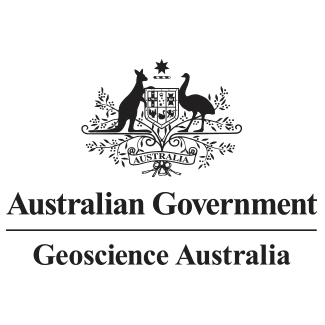Full description
Gravity data measure small changes in gravity due to changes in the density of rocks beneath the Earth's surface. The data collected are processed via standard methods to ensure the response recorded is that due only to the rocks in the ground. The results produce datasets that can be interpreted to reveal the geological structure of the sub-surface. The processed data is checked for quality by GA geophysicists to ensure that the final data released by GA are fit-for-purpose.This National Gravity Compilation 2019 CSCBA image is an image derived from the 2019 Australian National Gravity Grids A series. These gravity data were acquired under the project No. 202008. The grid used to produce this image has a cell size of 0.00417 degrees (approximately 435m). The data are given in units of um/s^2, also known as 'gravity units', or gu. This gravity anomaly grid is derived from ground observations stored in the Australian National Gravity Database (ANGD) as at September 2019, supplemented by offshore data sourced from v28.1 of the Global Gravity grid developed using data from the Scripps Institution of Oceanography, the National Oceanic and Atmospheric Administration (NOAA), and National Geospatial-Intelligence Agency (NGA) at Scripps Institution of Oceanography, University of California San Diego. Out of the approximately 1.8 million gravity observations, nearly 1.4 million gravity stations in the ANGD, and marine data were used to generate this grid. The ground gravity data used in this grid has been acquired by the Commonwealth, State and Territory Governments, the mining and exploration industry, universities and research organisations from the 1940's to the present day. Station spacing varies from approximately 11 km down to less than 1 km, with major parts of the continent having station spacing between 2.5 and 7 km. Airborne surveys have a line spacing ranging from 0.5 km to 2.5 km. The image shows complete Bouguer anomalies (A series) over Australia and its continental margins. Terrain corrections to gravity were calculated using both offshore bathymetry and onshore topography data.
Lineage
Maintenance and Update Frequency: notPlannedCreated: 09 11 2020
Issued: 09 11 2020
Modified: 05 07 2021
Data time period: 19 06 2019 to 10 1947
text: westlimit=107.9979; southlimit=-48.0021; eastlimit=164.0021; northlimit=-7.9979; projection=GDA94 (EPSG:4283)
User Contributed Tags
Login to tag this record with meaningful keywords to make it easier to discover
The Geophysical Archive Data Delivery System (GADDS2) portal provides HTTP download of geophysics datasets in a number of formats. Point and line datasets are available in NetCDF and ASEG-GDF2. Grid datasets are available in NetCDF, GeoTIFF and ERS. (File available for download in various formats from the GADDS2 portal)
uri :
https://portal.ga.gov.au/persona/gadds![]()
File download for National Gravity Compilation 2019 CSCBA image (National Gravity Compilation 2019 CSCBA image file download)
OPeNDAP web service for National Gravity Compilation 2019 CSCBA image (National Gravity Compilation 2019 CSCBA image OPeNDAP)
National Gravity Compilation 2019 CSCBA image OPeNDAP
- Local : pid.geoscience.gov.au/dataset/ga/144764
- global : e84980ba-fdbc-469e-8ca8-74d98d33fe68


